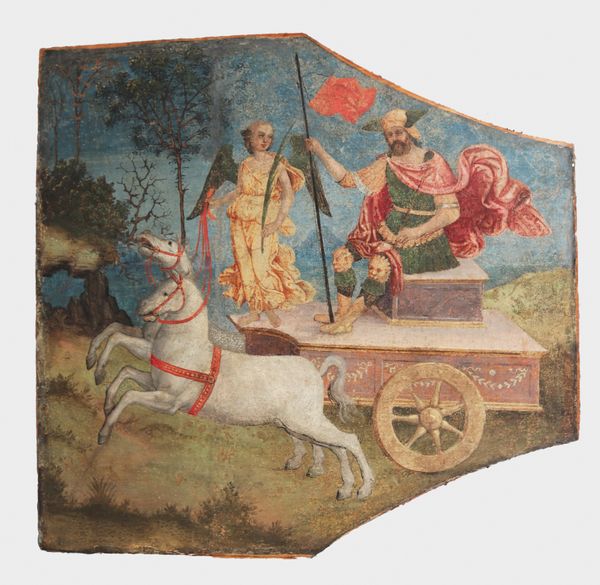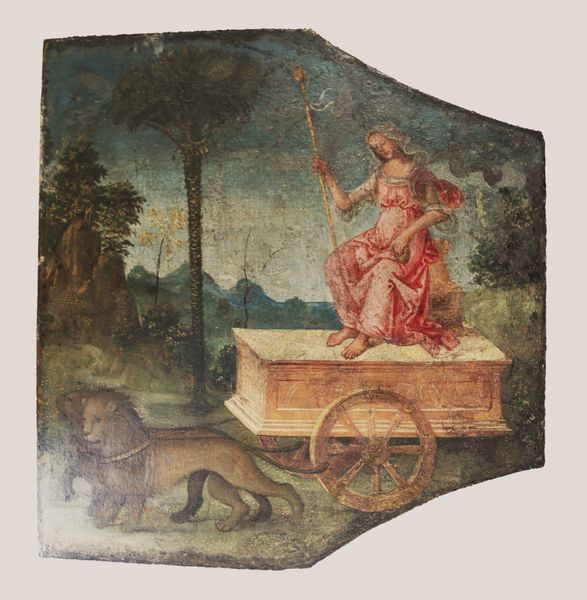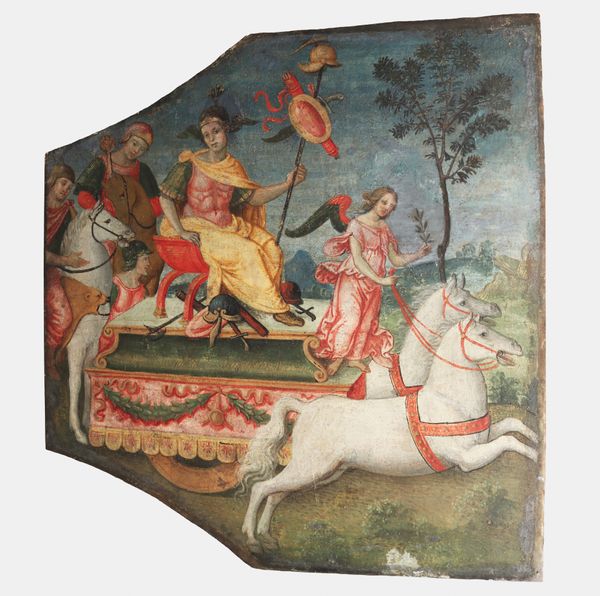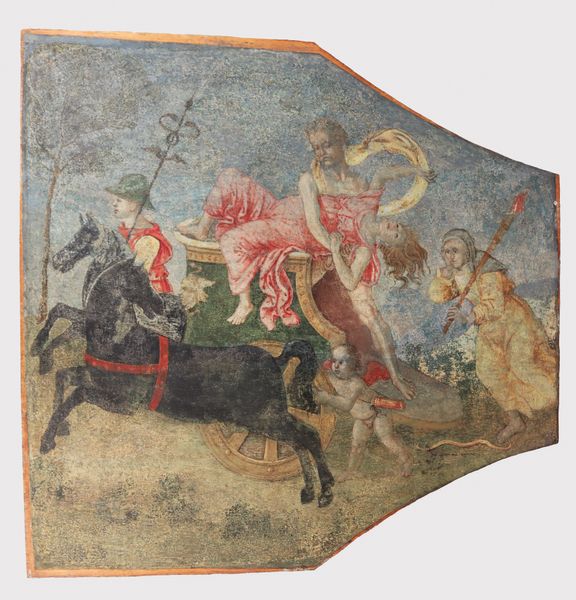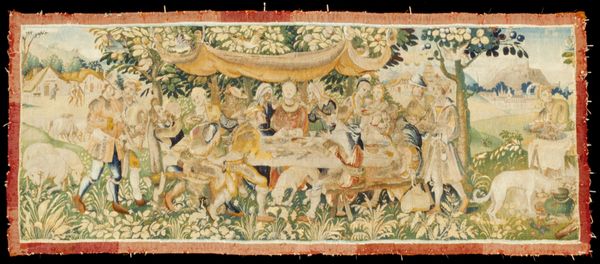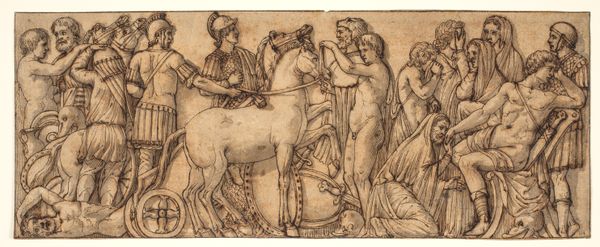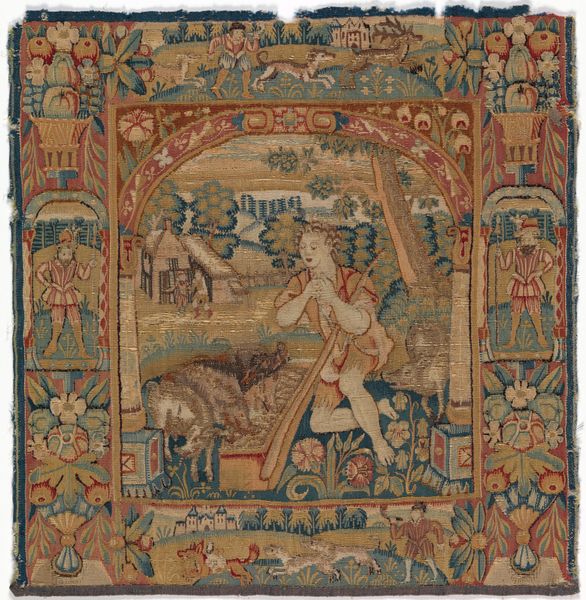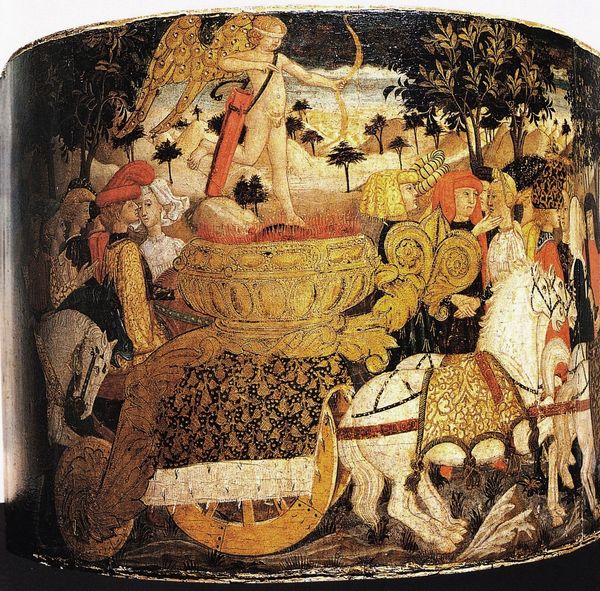
fresco, mixed-media
#
portrait
#
allegory
#
fresco
#
mixed-media
#
history-painting
#
armor
#
decorative-art
#
italian-renaissance
#
mixed medium
#
mixed media
Dimensions: Overall: 30 1/4 × 28 1/2 in. (76.8 × 72.4 cm)
Copyright: Public Domain
Pinturicchio painted this fresco fragment, Triumph of Alexander, sometime around the turn of the 16th century in Italy. Its classical subject matter reflects the Renaissance fascination with ancient Greece and Rome, but what was the function of such imagery? The fresco likely came from a palace or villa, where it would have served as decoration intended to signal the owner’s erudition, taste, and wealth. Alexander the Great, a famous conqueror, was a popular subject for such displays of power. The scene is rendered in bright colors and features an angel crowning Alexander with a laurel wreath, alluding to the glory of the patron who commissioned the fresco. The elephant-drawn chariot is an exotic element designed to suggest the reach of Alexander's empire, and by association, the patron's own influence. The history of art is inextricably linked to the history of its institutions, from the patronage system to the museum. The cultural and political meanings of works such as this are best understood through close attention to the historical record.
Comments
No comments
Be the first to comment and join the conversation on the ultimate creative platform.
